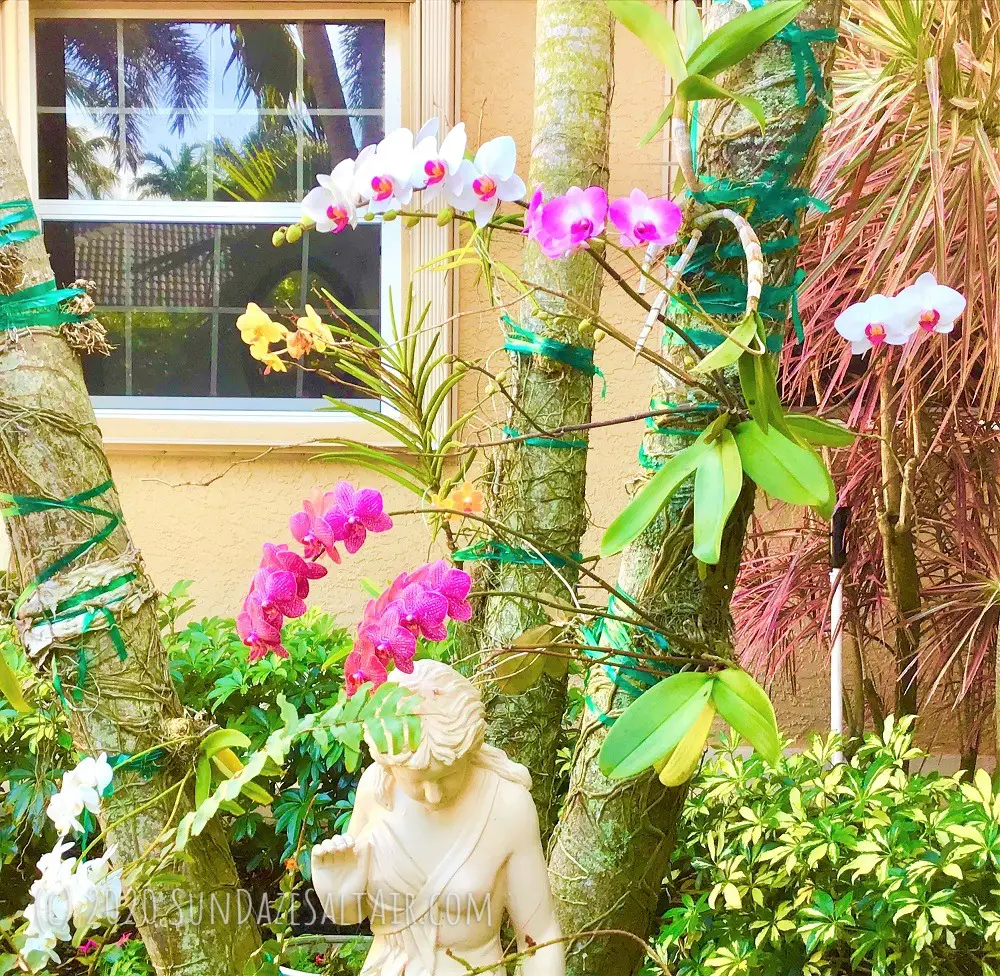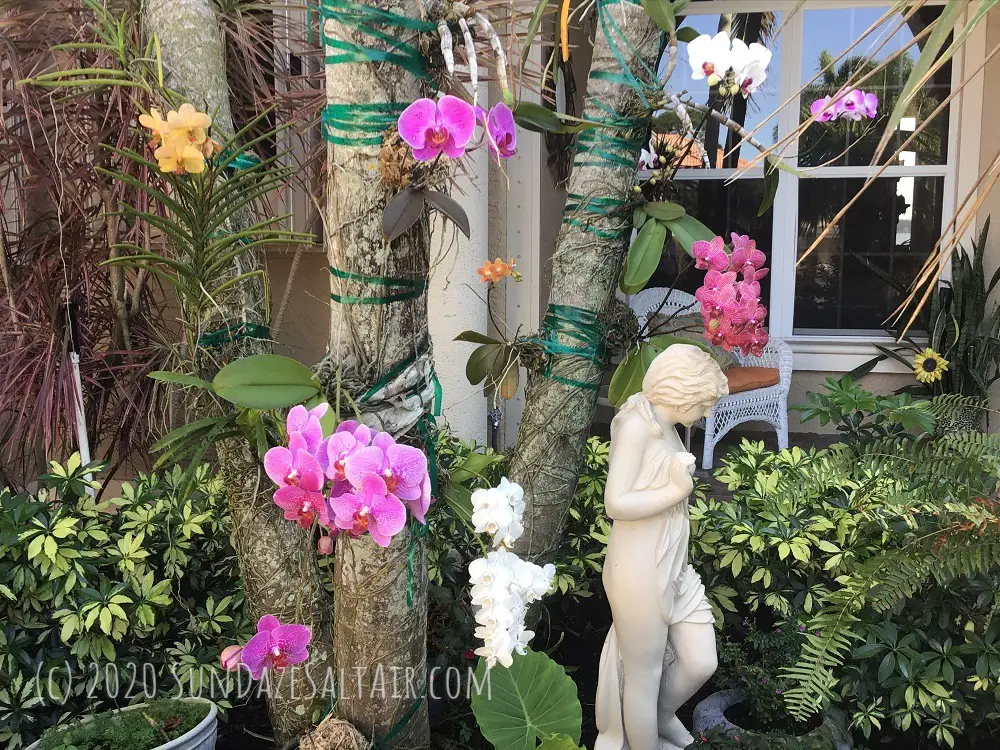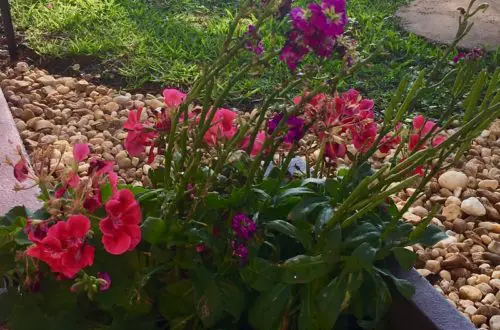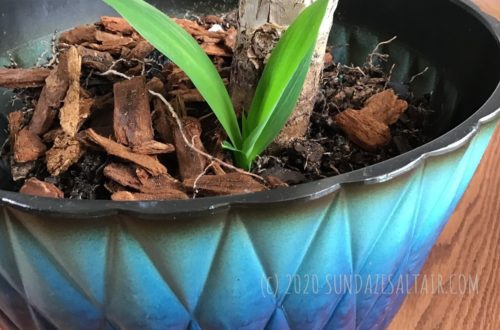
Quickly Revive A Dehydrated, Dry Orchid With Black Tea
Orchids Love Black Tea – Make A Cup Of Tea For Your Orchid
Do you have a dry, dehydrated orchid that looks like it has seen better days? So much so, that you even fear it may be dying? Does your orchid display dehydrated, limp and floppy-looking leaves? Upon closer inspection, do you notice dry, dehydrated roots? If so, it sounds like your orchid needs something to revive it, and fast. Believe it or not, one of the best things to revive your orchids may be sitting in your kitchen cupboard right now — black tea. That’s right– the same cup that you may enjoy every day just might be exactly what your orchid needs to revitalize and rehydrate it back to its former glory. Today, as part of my ongoing orchid care series, I will share the secret to reviving and rejuvenating a dehydrated orchid with black tea, and why it works so well. Now, let’s get started reviving your orchid using diluted black tea since a healthy orchid is a blooming orchid…
**You can also find out how to stimulate root growth on an orchid with dying roots here.
**Find out why your orchid has wrinkled and leathery leaves here.
**Note: This post contains some affiliate links for which a small commission may be earned if you decide to make a purchase through a link.

Why Revive a Dehydrated, Dry Orchid with Black Tea?
Reason #1: Provide Your Orchid with Vital Nutrients, Including Nitrogen
Just like we need vital nutrients to stay strong, healthy and reach our greatest potential, so do our orchids. While purchasing specialized orchid fertilizer is one way to give your orchids some of what they need, there are common, inexpensive household items that also increase the nutrient intake of your orchid companions. One of these, tea, is especially high in important minerals that orchids love. Specifically, black tea is relatively high in nitrogen, which happens to be one of the most beneficial nutrients for orchids and is especially important for the growth of orchid leaves.
While tea increases the nitrogen content available for your orchid, it also contains other important minerals, including potassium and phosphorous, plus calcium and magnesium. Phosphorous especially is vital for the growth of healthy roots, and for promoting blooming of your orchid.


Reason #2 To Revive a Dehydrated, Dry Orchid with Black Tea: Combat the Effects of Nitrogen-Depleting Potting Mix
For orchids in orchid bark potting mix, as it degrades over time, the nitrogen content is rapidly consumed, especially by toxic or “bad” bacteria. This leaves little critical nitrogen leftover to be absorbed by your orchid’s roots, which is an essential element to promote leaf growth and blooming. The higher levels of nitrogen in black tea help replenish some of that lost nitrogen.
TIP! When Can Orchids Benefit the Most from Black Tea? When New Leaves Appear & Root Growth Occurs
Nitrogen becomes increasingly important as your orchid grows and develops more roots and new leaves, making a time of new growth a great time to offer your orchids some tea. But, as we saw in Reason #1 and as the next reason shows, orchids with damaged leaves also have a lot to gain from “sipping” some tea…
Reason #3 To Revive a Dehydrated, Dry Orchid with Black Tea: Nitrogen Promotes New Leaf Growth
Which Orchids Benefit Greatly from Black Tea? Orchids In Need of New Leaves
As stated above, nitrogen is especially vital to new leaf growth. A major reason for this is due to the fact that nitrogen increases the production of chlorophyll. Chlorophyll, as we may recall from science class, is essentially food for your plant and is necessary to produce strong and healthy leaves. Therefore, an orchid with few healthy leaves, or with damaged leaves that have recently shed, is a perfect candidate to benefit from black tea. So, while tea is beneficial to an orchid with new growth, it also greatly benefits one that is struggling to recover lost leaves.
Reason #4 To Revive a Dehydrated, Dry Orchid with Black Tea: Black Tea Contains Tannins That Orchids Love
Tea, especially black and green tea, contains tannins, a group of chemical compounds in the polyphenol family that offer unique health benefits for both us and our orchids. Tannins are found in nature in a variety of plants as well as being found in tree bark, leaves, nuts, and fruits… coincidentally all elements found in abundance in the rain forest where many orchids originate. Plants actually produce tannins as a natural defense against pests.
Now, picture orchids growing wild in subtropical and tropical rainforests, attached to trees under the thick forest canopy. Every time it rains, these wild-growing orchids are the lucky recipients of all that nutrient-filled rain water that trickles down after making contact with tree bark, leaves, flower nectar and sap — all rich sources of tannins. At home, you can come close to simulating these rainforest conditions by brewing your orchids a cup of tea. That way, your orchids get all the wonderful healing benefits of tannins, including the specific polyphenol tannic acid, without having to take a trip to the rainforest.
********
What Type of Tea Is Best to Revive a Dehydrated, Dry Orchid?
When To Choose Black Tea
Black tea has a pH level between 5.0 to 5.5, which is slightly on the more acidic side of neutral. Why is slightly acidic better? If you water your orchid with tap water, you should be aware that tap water is more on the alkaline side, so it is beneficial to lower the pH level to restore pH balance to benefit your orchid. This is similar to the way alkaline tap water can have a detrimental effect on your skin over time, unless you follow up with a slightly more acidic “toner” to restore pH balance to your skin.
Choose Green Tea If…
If you are the proud grower of a terrestrial orchid, such as a Cymbidium or Venus Slipper aka Paphiopedilum, you will find that these types of orchids prefer a slightly more alkaline environment, so choose green tea, which has a slightly higher alkalinity of 7.0 to 10.
TIP! While some herbal teas, such as hibiscus, are known to contain tannins, the highest concentration is found in black and green teas, plus some herbal teas may contain ingredients that could be harmful to your orchid.


********
How To Revive a Dehydrated, Dry Orchid with Black Tea (Or Green) Step-By-Step
Soak Your Orchid’s Roots in Tea
Prep
- First, remove old, degraded potting media gently from your orchid’s roots following these instructions.
- Once your orchid is free of potting mix and its roots are exposed, rinse them, observing which roots are green and hydrated, indicating they are healthy. Leave the healthy roots alone and cut off and remove any roots that are dry, papery and brown, following detailed instructions here.
Make Your Orchid Some Tea
- Begin making the tea. Steep a cup of tea by placing a black (or green) teabag in a cup and pouring room temperature distilled water over it. Allow it to steep for approximately five minutes until the water develops some color. ***Using room temperature water and not hot water and only steeping the tea for just five minutes ensures that the tea is not too strong for your struggling orchid. If the tea is too strong, it may do more harm than good. I also choose to use distilled water since it is slightly on the more acidic side of the pH scale. ***Also, fyi, tannins in tea are actually heat-stable compounds, meaning that they will not be destroyed if you heat them. Therefore, while it’s preferable to use weak tea on your orchid, you can also, occasionally, use stronger leftover tea in small amounts that had been heated earlier but has cooled down to room temperature, since the tannins will still be effective. Of course, you never want to use hot tea on your orchids.
- Pour the steeped tea into a large cup or vase that can comfortably accommodate your orchid without it being too tight or too loose. Immerse your orchid’s roots only into the cooled, room-temperature tea carefully so you don’t harm any roots. Be sure that the tea only covers the roots and that the crown area of your orchid remains dry; we don’t want to inadvertently cause any rotting issues.
- Keep your orchid in its tea “bath” during the day in an area where it receives shaded, indirect light. How long you leave it in it’s bath depends on how dehydrated your orchid is but check on it after 15 to 20 minutes. Definitely be sure to remove your orchid from the cup or vase before nightfall to “air dry” or you will create a recipe for rot. Evaluate your orchid the next day.
- If your orchid looks healthy and hydrated, you can stop the tea baths. If it still looks dehydrated, you can place the orchid back in its cup or vase to resume its bath again. If you re-use the tea, remember to refrigerate the tea the night before. You may allow the tea to warm up to room temperature before placing your orchid in it.
- You should see improvements in the hydration of your orchid’s roots and leaves, with the leaves beginning to appear firmer and healthier. You may periodically use this routine after a break if your orchid starts to look parched again.
********
Quickly Revive Dehydrated, Dry Orchids with The Black Tea Method to Bring Renewed Life to Struggling Orchids
Whether you have dry, shriveled looking roots or limp, leathery leaves, a dehydrated orchid craves hydration, as well as nutrients. For a dehydrated orchid or one with a damaged root system, or few leaves, one of the best things you can do to both revitalize roots and promote growth is to give the orchid an infusion of diluted tea. The black (or green) tea provides the orchid with a few things they desperately crave to restore their prior good health — water and nitrogen. With healthy roots once again, your orchids should be able to absorb everything they need to overcome their dehydration, gaining renewed life and vibrancy in the process. And this renewed vibrancy will pay off in the form of beautiful and bountiful orchid blooms as appreciation for your efforts.

********
Have you tried using black tea to revive your dehydrated orchids? Share your orchid rescue routine below!


You May Also Like

It May Be Late Summer But Signs Show Fall Is In The Air… Plus Is My Geranium Dead Or Just In Need Of Pruning? Rescuing Summer-Weary & Wilted Geraniums From The Florida Heat
September 6, 2020
How To Make A Tropical Wreath
April 30, 2021